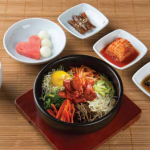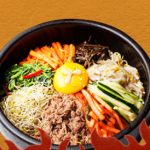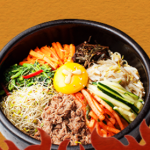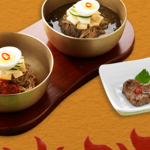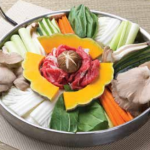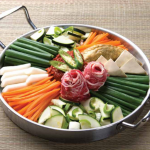Introduction
Korean cuisine is like a symphony of flavors, enticing your taste buds with a unique blend of spices, fermented delights, and vibrant colors. When you think of Korean food, a plethora of iconic dishes instantly come to mind, each leaving an indelible mark on your culinary memory. In this article, we embark on a gastronomic journey to uncover some of the most beloved and remarkable dishes that define Korean cuisine.
Discovering Korean Culinary Treasures
Bibimbap: A Burst of Colors and Flavors
Bibimbap, a famous Korean rice dish, is a masterpiece that effortlessly showcases the beauty of simplicity. Served in a hot stone bowl, it consists of a bed of steamed rice topped with various vegetables, marinated meat, a fried egg, and a dollop of gochujang (Korean chili paste). The mesmerizing medley of textures and tastes makes Bibimbap a must-try dish for any food enthusiast.
Kimchi: The Quintessential Side Dish
No exploration of Korean cuisine would be complete without mentioning kimchi, a fermented vegetable dish that has captured the hearts and palates of people worldwide. Made from napa cabbage, radishes, or cucumbers, kimchi offers a tangy, umami-packed experience that tantalizes the senses. Its complex flavors make it a versatile accompaniment to virtually any Korean meal.
Bulgogi: A Meat Lover’s Delight
Prepare to have your taste buds dance with delight as you savor the succulent and tender bulgogi. Marinated in a soy sauce-based mixture and often cooked over an open flame or on a grill, this grilled beef dish is a carnivorous dream come true. Whether you wrap it in lettuce leaves or enjoy it with a bowl of rice, bulgogi promises an explosion of flavors.
Tteokbokki: A Spicy Street Food Sensation
For those seeking a delightful street food experience, tteokbokki is a must-try dish. These chewy rice cakes bathed in a fiery red chili sauce (gochujang) provide a harmonious balance of spiciness and sweetness. Tteokbokki is often adorned with fish cakes, boiled eggs, and scallions, adding texture and flavor to this beloved Korean street food.
Japchae: A Celebratory Noodle Dish
Japchae, a vibrant and colorful dish made with glass noodles, meat, and an assortment of vegetables, is a staple at special occasions and celebrations in Korea. The noodles are stir-fried in sesame oil and soy sauce, creating a delectable mix of sweet and savory flavors. The inclusion of mushrooms, carrots, and spinach adds a delightful crunch and earthy undertones to this iconic dish.
Conclusion
Korean cuisine never fails to surprise and captivate with its rich flavors and diverse range of dishes. From the sizzling sweetness of bulgogi to the undeniable allure of kimchi, each bite allows you to taste the heart and soul of a proud culinary tradition. So, indulge in the exquisite flavors of Korean cuisine and embark on a journey that promises to be nothing short of extraordinary.
Frequently Asked Questions (FAQ)
- What makes Korean cuisine unique?
-
Korean cuisine is renowned for its bold flavors, extensive use of fermented ingredients, and the harmonious balance between sweet, sour, spicy, and savory tastes. These distinctive characteristics make it one of a kind.
-
Can you recommend any vegetarian Korean dishes?
-
Yes, there are several vegetarian-friendly Korean dishes. Some popular choices include bibimbap (without meat), kimchi fried rice (using tofu or mushrooms as a substitute), and delicious vegetable pancakes called “jeon.”
-
Is Korean food always spicy?
-
While Korean cuisine does embrace spiciness as a prominent element, not all dishes are overwhelmingly hot. Many dishes offer a delightful balance of flavors, incorporating other tastes like sweetness and umami.
-
How can I adapt Korean recipes to suit my dietary restrictions?
-
Korean cuisine is versatile and can easily be adapted to suit various dietary requirements. You can substitute meat with tofu or mushrooms, replace fish sauce with soy sauce or tamari, and adjust the level of spiciness according to your preferences.
-
Are there any Korean desserts worth trying?
- Absolutely! Korean desserts offer a delightful blend of sweet and sometimes savory flavors. Popular choices include patbingsu (shaved ice dessert with toppings), hotteok (sweet pancakes filled with syrup and nuts), and bungeoppang (fish-shaped pastries filled with a sweet red bean paste).
So, let your taste buds rejoice as you venture into the world of Korean cuisine, filled with iconic dishes that are sure to leave an everlasting impression!
*Note: Markdown formatting has been applied to the blog post content.


